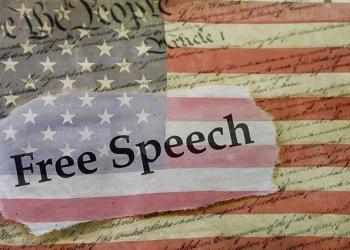Editorial by Robert Phillips, Deputy District Attorney (Retired)
Profanity and the First Amendment: Some of us were brought up in an atmosphere where the use of profanity was severely frowned upon, some believing that its use merely reflects a lack of intelligence and culture, or maybe just bad manners. For others, expressing oneself through language laced with “bad words” seems to be just a fact of life. Either way, the courts have been telling us now for some time that the public use of profanity is, under most circumstances, constitutionally protected free speech under the First Amendment. (See Cohen v. California (1971) 403 U.S. 15, where defendant’s wearing of a jacket in a county courthouse with lettering on the back expressing his discontent over the Vietnam war and the draft—“F__k The Draft”—was held to be protected by the First Amendment.) We also now know that a person has a First Amendment constitutional right to be critical of the police, even to the point where he or she directs profanity or obscene gestures at an officer. Such conduct does not constitute “disorderly conduct” or any other form of resisting an officer in the performance of his duties, and thus does not provide the necessary probable cause for an arrest. (Duran v. City of Douglas (9th Cir. 1990) 904 F.2nd 1372, 1377-1378; Velazquez v. City of Long Beach (9th Cir, 2015) 793 F.3rd 1010, 1019-1020.) The U.S. Supreme Court just issued a new decision reemphasizing the constitutional protections inherent in the use of profanity: Mahanoy Area School District v. B.L. (June 23, 2021) __ U.S. __ [141 S.Ct. 2038; 210 L.Ed.2nd 403]. In Mahanoy, the High Court (in an 8-to-1 decision) ruled that a public high school violated a student’s First Amendment rights by suspending her from the school’s cheerleading team when, outside of school hours and away from campus, the student transmitted on social media vulgar language and gestures (i.e., posting pictures on the social media “snapchat,” showing the minor and a friend with middle fingers raised, bearing the caption: “F__k school f__k softball f__k cheer f__k everything”), criticizing the school and its cheerleading team. The Court ruled that although the school’s regulatory interests remained significant in some off-campus circumstances, certain features of off-campus speech diminished the strength of the unique educational characteristics that might call for special First Amendment leeway. Under the facts of this case, the school’s interest in prohibiting students from using vulgar language to criticize a school team or its coaches did not overcome the student’s First Amendment interests in free expression. Contrary, perhaps, to what authority the school might have, had she expressed the same sentiments while on campus during school hours, the student in this case spoke under circumstances where the school did not stand in “loco parentis,” and there was no evidence of a substantial disruption of any school activity. Bottom line is that this young lady, under these circumstances, had a constitutional right to demonstrate to all who might be interested her lack a character and maturity by expressing her sentiments in such a crude and crass manner. Her parents must be so proud. If you are interested, I have a written 39-page memorandum on First Amendment freedom of expression issues (including the rights of solicitors to use big box stores’ private property to pass out leaflets, etc.) that is available upon request, and which I constantly update as new relevant cases come out.

